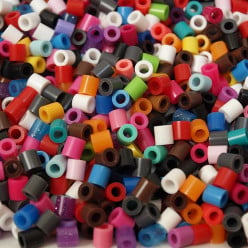Drug Companies exempt from law suits
Have you heard about this?
http://www.whiteoutpress.com/articles/q … -lawsuits/Here is a somewhat more thorough explanation.
http://www.scotusblog.com/?p=166652
Basically if a side effect is extremely rare it does not count as making the product unreasonably dangerous and extremely rare side effects are not put on labels.
The heading "exempt from lawsuits" is clearly not correct as this is a ruling from a law suit. They just successfully defended themselves from prosecution.Something has seriously gone wrong with America. It wasn't that long ago I read where some people are projecting the downfall of America by 2025.
Or perhaps people and their doctors should have a detailed consultation before taking dangerous pharmaceuticals (which is, as it happens, all pharmeceuticals).
IMHO requiring listing of a one in a trillion side effect is no more or less sensible than requiring the labeling of hot beverages as hot. This is an area where adults need to inform themselves before using a product.
That said, she was very unlucky and the outcome for her was tragic.Consultation with one's Doctor is good advice the problem however is everybody may not make enough of an income to have a doctor. Looking at ingredients not just on medical items but plain doughnuts for instance I can't even pronounce half of the multitude of ingredients they have listed for plain doughnuts who is going to spend the time to explain to me free of charge what all these ingredients mean?
Prescription drugs require a valid doctor-patient relationship--for the very reason that they are unsafe to take without expert medical advice.
Lacking money for one = lacking money for the other. Sad but true. The answer would be to try and find a free clinic.And yet you will willingly and eagerly ingest quantities of dihydrogen oxide on most days.
An unpronounceable name doesn't mean much as most chemicals have just such a name.I believe you're referring to dihydrogen monoxide, which will kill you if you breathe in just a small amount of it.
That's the stuff. Deadly as all get out; the area I live in has had several people die of it this year already. Two more in the paper tonight, in fact. You do NOT want to be breathing in that stuff!
Yes that is a terribly misleading title. I was all interested by it though. The case is strictly about labeling torts. Not about whether or not the drug is bad or dangerous. The feds have gotten so into the labeling business that they basically dictate exactly what is on the label. Cool designs and logos or brand names no but the warnings and directions for sure.
So if the gov. tells someone exactly how they are to do something, that someone has no discretion and so we just cannot hold them liable for a bad label --- it would not be fair at all.
However if the label materially differed from the fed regs then we could. Or if the feds have not dictated a label policy then we could.
But we should never wander to far from the notion that adults know that medications have risks almost every medication known to man has the chance of substantial side effects. It is just not reasonable that people do not know that today.
With out looking into it further, I would bet that all the injured parties in all the cases mentioned herein received compensation on another theory of liability or against a different defendant.The pamphlets that come with ANY prescription drug I get from ANY doctor I see (it's all Kaiser so it's all consistent) clearly state that there are risks associated with the drug and what do do if any of these symptoms occur. But that "my doctor has determined that the potential benefits outweigh the potential risks." Therefore, the responsibility is on the doctor. Oftentimes they require a pharmacist consult to make sure I am clear on what the drug is and how to use it. If I waive the consult I have to sign a form to that effect.
Psycheskinner's reference to the "hot coffee" incident prompted me to look it up. I vaguely remembered it was McDonalds and a lady spilled coffee in her lap.
Here's what really happened.
Sometimes companies really are at fault.
There is a lot of hype about the McDonalds' scalding coffee case. No one is in favor of frivolous cases of outlandish results; however, it is important to understand some points that were not reported in most of the stories about the case. McDonalds coffee was not only hot, it was scalding -- capable of almost instantaneous destruction of skin, flesh and muscle. Here's the whole story.
Stella Liebeck of Albuquerque, New Mexico, was in the passenger seat of her grandson's car when she was severely burned by McDonalds' coffee in February 1992. Liebeck, 79 at the time, ordered coffee that was served in a styrofoam cup at the drivethrough window of a local McDonalds.
After receiving the order, the grandson pulled his car forward and stopped momentarily so that Liebeck could add cream and sugar to her coffee. (Critics of civil justice, who have pounced on this case, often charge that Liebeck was driving the car or that the vehicle was in motion when she spilled the coffee; neither is true.) Liebeck placed the cup between her knees and attempted to remove the plastic lid from the cup. As she removed the lid, the entire contents of the cup spilled into her lap.
The sweatpants Liebeck was wearing absorbed the coffee and held it next to her skin. A vascular surgeon determined that Liebeck suffered full thickness burns (or third-degree burns) over 6 percent of her body, including her inner thighs, perineum, buttocks, and genital and groin areas. She was hospitalized for eight days, during which time she underwent skin grafting. Liebeck, who also underwent debridement treatments, sought to settle her claim for $20,000, but McDonalds refused.
During discovery, McDonalds produced documents showing more than 700 claims by people burned by its coffee between 1982 and 1992. Some claims involved third-degree burns substantially similar to Liebecks. This history documented McDonalds' knowledge about the extent and nature of this hazard.
McDonalds also said during discovery that, based on a consultants advice, it held its coffee at between 180 and 190 degrees fahrenheit to maintain optimum taste. He admitted that he had not evaluated the safety ramifications at this temperature. Other establishments sell coffee at substantially lower temperatures, and coffee served at home is generally 135 to 140 degrees.
Further, McDonalds' quality assurance manager testified that the company actively enforces a requirement that coffee be held in the pot at 185 degrees, plus or minus five degrees. He also testified that a burn hazard exists with any food substance served at 140 degrees or above, and that McDonalds coffee, at the temperature at which it was poured into styrofoam cups, was not fit for consumption because it would burn the mouth and throat. The quality assurance manager admitted that burns would occur, but testified that McDonalds had no intention of reducing the "holding temperature" of its coffee.
Plaintiffs' expert, a scholar in thermodynamics applied to human skin burns, testified that liquids, at 180 degrees, will cause a full thickness burn to human skin in two to seven seconds. Other testimony showed that as the temperature decreases toward 155 degrees, the extent of the burn relative to that temperature decreases exponentially. Thus, if Liebeck's spill had involved coffee at 155 degrees, the liquid would have cooled and given her time to avoid a serious burn.
McDonalds asserted that customers buy coffee on their way to work or home, intending to consume it there. However, the companys own research showed that customers intend to consume the coffee immediately while driving.
McDonalds also argued that consumers know coffee is hot and that its customers want it that way. The company admitted its customers were unaware that they could suffer thirddegree burns from the coffee and that a statement on the side of the cup was not a "warning" but a "reminder" since the location of the writing would not warn customers of the hazard.
The jury awarded Liebeck $200,000 in compensatory damages. This amount was reduced to $160,000 because the jury found Liebeck 20 percent at fault in the spill. The jury also awarded Liebeck $2.7 million in punitive damages, which equals about two days of McDonalds' coffee sales.
Post-verdict investigation found that the temperature of coffee at the local Albuquerque McDonalds had dropped to 158 degrees fahrenheit.
The trial court subsequently reduced the punitive award to $480,000 -- or three times compensatory damages -- even though the judge called McDonalds' conduct reckless, callous and willful.
No one will ever know the final ending to this case.
The parties eventually entered into a secret settlement which has never been revealed to the public, despite the fact that this was a public case, litigated in public and subjected to extensive media reporting. Such secret settlements, after public trials, should not be condoned.
-----
excerpted from ATLA fact sheet. © 1995, 1996 by Consumer Attorneys of CaliforniaI was referring to the need to label hot drinks hot, not that case. She won and rightly so, the temperature of that coffee was insane. It was a dangerous product issue, and the product was dangerous not matter what it was labelled.
Related Discussions
- 18
Why do you think the drug companies today spend so much money on media ads and n
by Audrey Selig 9 years ago
Why do you think the drug companies today spend so much money on media ads and not on research?In the past, very few drugs were advertised, and it seems in the last ten years media overloads us with these ads. I know it is to make money, but whatever happened to finding cures and ensuring safety...
- 12
Do you believe the drug industry has invented disorders?
by BenWritings 12 years ago
Do you believe the drug industry has invented disorders?Do you believe that many chemical imbalances and disorders are simply created for profit? Brainwashing us into thinking there's always something wrong with everyone, requiring pills?
- 63
The ethics of medical patents
by Catherine Tally 10 years ago
If the ethics of practicing medicine are to focus on the benefit of humanity at large, why are Big Pharma , biotech companies, and universities allowed to maintain long-held patents for ridiculous profits which often prevent people from being able to afford proper treatment of illnesses and...
- 8
Should drug companies be allowed to advertise on television, the radio or in pri
by Dennis L. Page 11 years ago
Should drug companies be allowed to advertise on television, the radio or in print media?In the U.S. pharmaceutical companies fill the airwaves and print media with all types of drugs surrounding a myriad of conditions. Human nature being what it is, many people are now self diagnosing illnesses...
- 26
Companies like Walmart and McDonalds are destroying the economy...
by Jerad Maplethorpe 13 years ago
Hubpages might take the link down on this page, but this hub contains the main concept I want to discuss: <link snipped>Basically, we need to demand that the big corporations like McDonalds and Wal•Mart pay their employees a respectable wage. These companies are absolutely filthy rich, and...
- 13
Prescription of medications is boilerplate and stupid.
by Eric Dierker 10 years ago
Let us just say that a Dr. prescribes Ibuprofen. Let us just say it is a prescription type dosage. Let us just say that my wife has a back injury. Let us just say that I have a back injury. Let us say we go to the same GP. Let us say the Dr. knows us both. And let us just say that he prescribes the...












